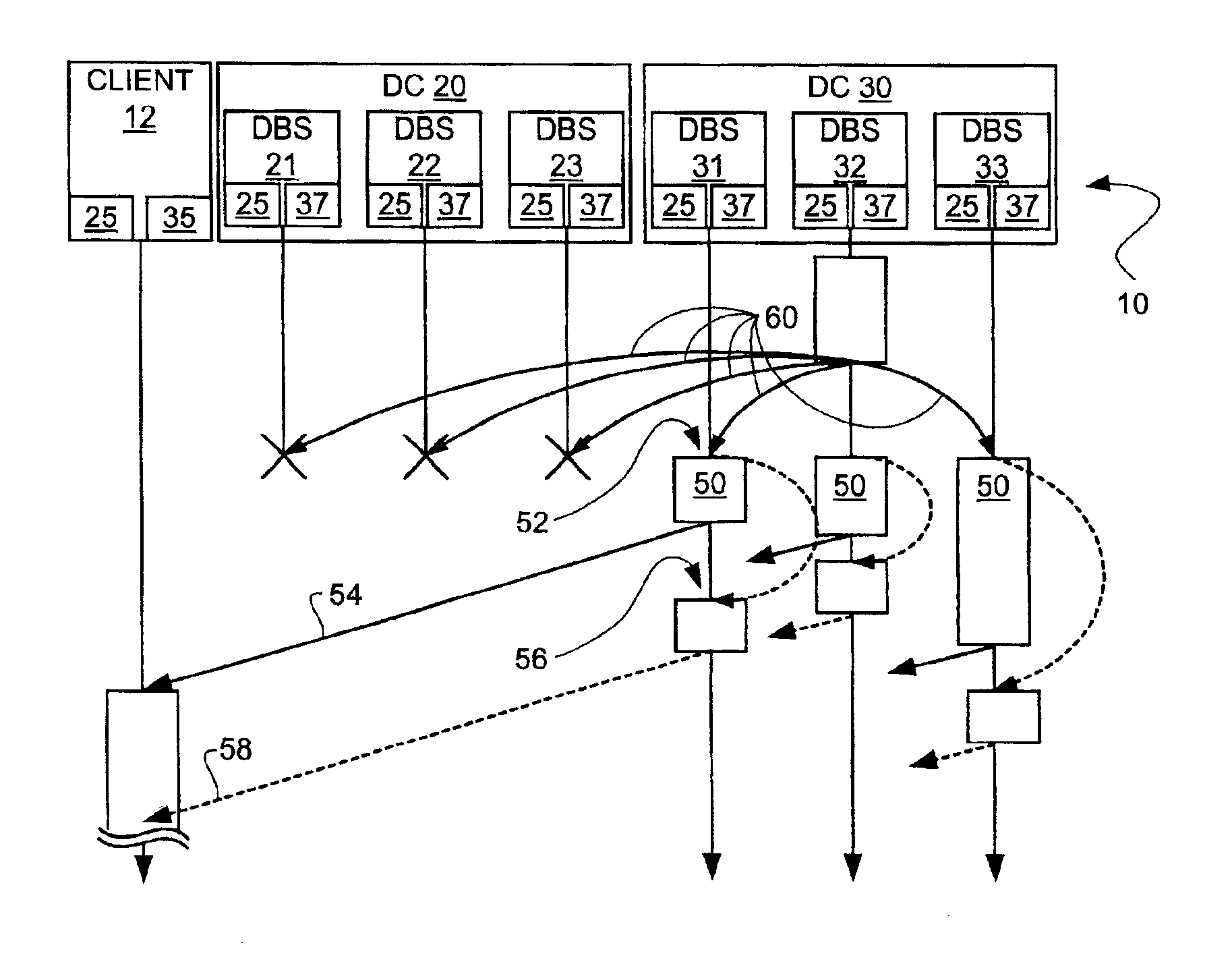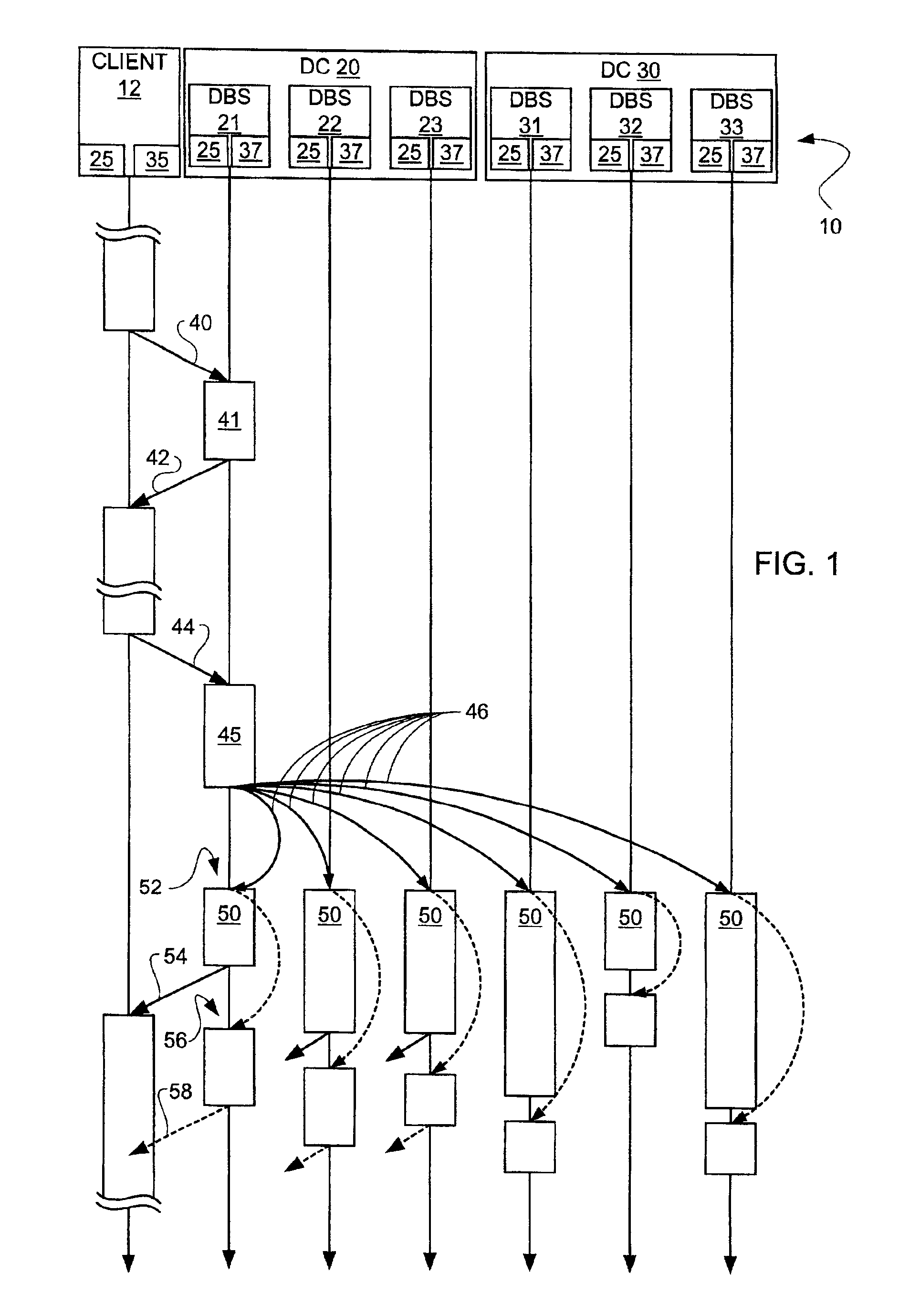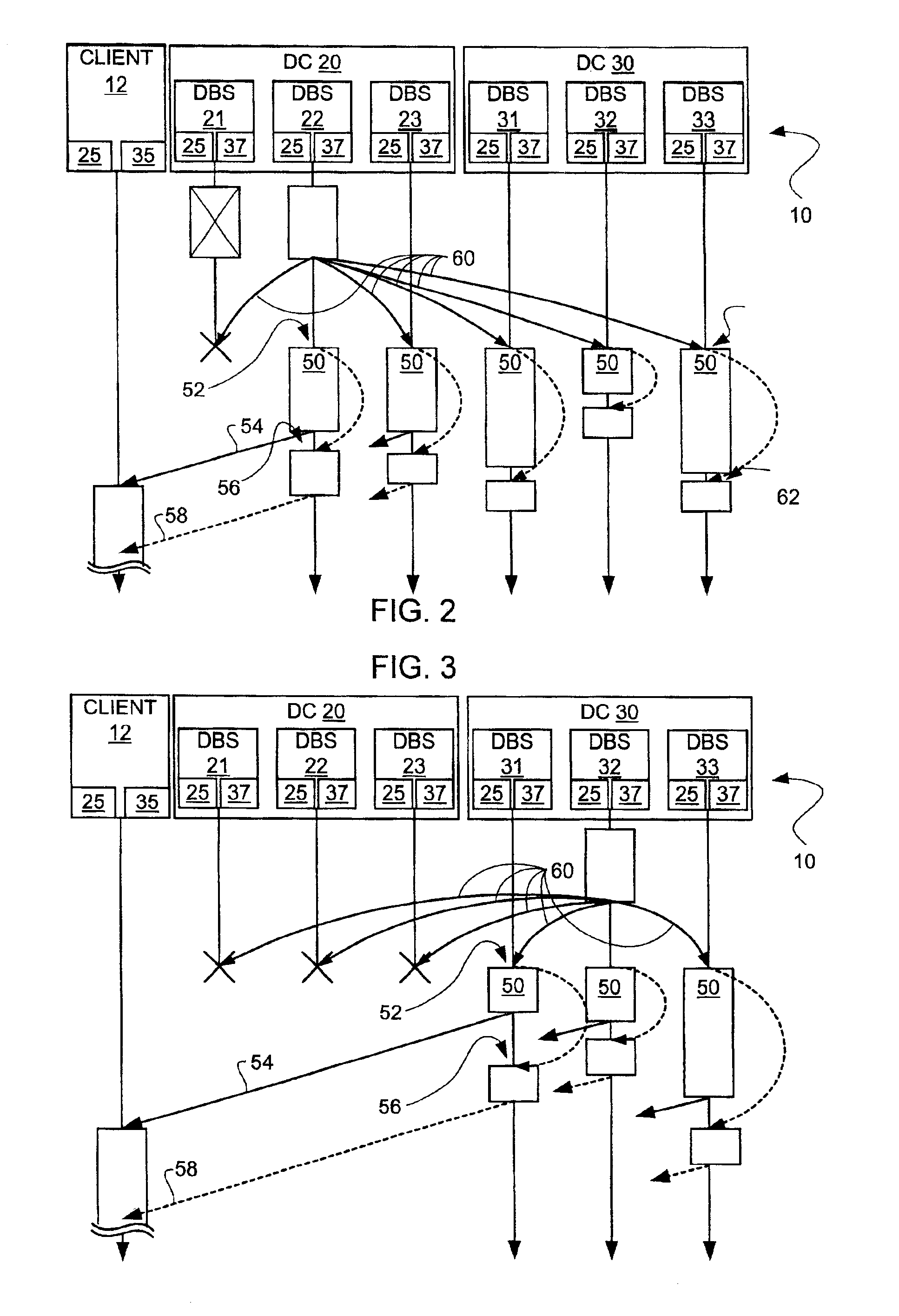Distributed data center system protocol for continuity of service in the event of disaster failures
a data center and disaster failure technology, applied in data processing applications, redundant hardware error correction, instruments, etc., can solve the problems of not providing any means to orchestrate the propagation of updates from multiple logs, not being able to build a highly available system, and not being able to build a system
- Summary
- Abstract
- Description
- Claims
- Application Information
AI Technical Summary
Benefits of technology
Problems solved by technology
Method used
Image
Examples
Embodiment Construction
[0017]The present invention is a distributed data center system protocol that prescribes how database clients and data centers interact to achieve a common goal. The protocol consists of two parts: one is executed at the database clients, and the other at the data centers. The database clients interact with the data centers to execute transactions.
[0018]Disasters can be caused by the environment (e.g., floods, earthquakes, fires), and also a coincidence of events within the computer system itself (e.g., operator errors, simultaneous crash of critical components due to software faults). Disaster-resilient systems often rely on some replication mechanism. For example, to implement disaster recovery for a database system, a typical configuration is to have an active database in a primary data center and stand-by databases in the primary data center and in backup data centers. One of the major problems solved by the present invention is how to handle the failover of these data centers t...
PUM
 Login to View More
Login to View More Abstract
Description
Claims
Application Information
 Login to View More
Login to View More - R&D
- Intellectual Property
- Life Sciences
- Materials
- Tech Scout
- Unparalleled Data Quality
- Higher Quality Content
- 60% Fewer Hallucinations
Browse by: Latest US Patents, China's latest patents, Technical Efficacy Thesaurus, Application Domain, Technology Topic, Popular Technical Reports.
© 2025 PatSnap. All rights reserved.Legal|Privacy policy|Modern Slavery Act Transparency Statement|Sitemap|About US| Contact US: help@patsnap.com



